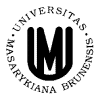BIODIVERSITY Research Group
Research Teams and their Goals
Geobotany
Modelling of Spatial Relationships of Vascular Plant Community Diversity Predictive modelling of spatial relationships between the communities of vascular plants and ecological factors on the landscape level. Synthesis of existing phytocoenological and phytogeographic data into predictive models. The research team’s databases include data on vegetation and environment as georeferenced phytocoenological relevé’s and phytogeographic grid maps. Predictive models of spatial distribution patterns of species and vegetation types in scales from 100 km2 (in orders of magnitude) up to the entire Czech Republic will be created with help of multivariate statistical methods connected to GIS. Responsible Individual for the Modelling of Vascular Plant Community Diversity Patterns:
|
Biosystematic
Botany
| Vascular Plant Diversity
Population diversity of vascular plants and micro-evolutionary phenomena. Collecting in the field and subsequent cultivation will provide the basic source of material. In the case of plants with a pronounced trend towards a clonal organisation we shall source on unique representative sets of cultivated clones of some model groups - Eleocharis palustris agg. (200 clones from all over Europe), Poa pratensis agg. (100 clones - Central Europe, North America), Pilosella bauhinii agg. (50 clones - Central Europe), Festuca ovina agg. (80 clones - Central Europe). Morphological and caryological analyses will be complemented by cultivation experiments that allow to distinguish modifications induced by soil factors from ecotypes. Turessonic conception; detection of various types of breeding systems as the most important factors determining the patterns of morphological variability, growth strategies, population dynamics and micro-evolution; investigating the geographical dependence of individual cytotypes. Based on PCR analysis of DNA (RAPD, Targeted PCR, AFLP) the genetic variability of the population shall be described and the hypothesis of hybridogenous speciation shall be tested for selected model groups. Responsible Individual for Vascular Plant Diversity:
|
Invertebrates
| Invertebrate
Diversity
In regard to species richness more than half of the known biota are animals. Estimates of the real number of the Earth’s animal species differ depending on the author in up to dozens of million species! New species of invertebrates and particularly of insects are continuously found and described, even in the region of Central Europe. From the area of the Pálava Biosphere Reserve of the UNESCO alone, more than 100 species new to science have been described. From another point of view, Czech and Slovak dipterologists alone described almost 300 new species of Diptera from all over the World in the period of 1986 to 1995. The continuous promoting of the biosystematics of many taxonomic groups of animals, particularly of two-winged insects, in the Central European region will present the key element of studies on invertebrates. The creation of an extensive Internet database of terrestrial and aquatic invertebrates of the Pálava Biosphere Reserve of the UNESCO shall complete the efforts of dozens of authors lasting for many years. Preparing another volume of a dipterological bibliography for publication and making the preceding volumes accessible on the Internet shall present the third area of activities. Regarding the conservation of plant diversity, pollinators are today generally considered as a very important component of insect fauna that is extremely endangered by the activity of man. The survey of the Pálava Biosphere Reserve showed the presence of 9 species of bumblebees only, of which only two were abundant. Another output shall be an overview of the occurrence of bumblebees, including data on their relations to other organisms. Approaches suitable to increase the abundance of bumblebees in the studied ecosystems shall be proposed. In charge of the Research Plan and Responsible Individual for Invertebrate Diversity: Prof. RNDr. Jaromír Vaňhara, CSc.
|
Hydrobiology
| Diversity of Aquatic
Organisms
The Research Plan shall follow up on the long-term monitoring of species and communities of aquatic organisms and their quality. Since 1956 very valuable data on the biodiversity of running waters have been collected particularly in the catchments of the Morava and Odra (Oder) rivers. These faunistic data have to be verified (new insights into species identification, new species etc.) and complemented by up-to-date information. The following outputs are planned: basic data for the planned publication Fauna Aquatica Europea centralis, the visualisation of the results by GIS in connection with the quality of the aquatic environments, landscape units and social importance (National Parks, Protected Landscape Areas, etc.). Identification keys for the orders Ephemeroptera, Plecoptera and Trichoptera shall be prepared. Up to know this whole range of scientific questions has never been approached in such a broad manner. Although publications regarding the biodiversity of the aquatic environment do exist within Central Europe, these generally include only a minimum of data from the Czech Republic (if any) and do not consider individual species or entire communities from the standpoint of ecosystems and zoogeografic regions. Responsible Individual for the Diversity of Aquatic Organisms:
|
Small Mammals
| Small Mammal
Taxocoenoses
Up to now the research has focused on the surveillance and monitoring of the diversity of taxocoenoses of small mammals (terrestrial mammals and bats) and on the habitat preferences of model species. It is under way in various types of natural ecosystems as well as such influenced by the activity of man located in Moravia and adjacent areas. Besides standard methodologies, modern methods presenting a minimum intrusion into the life of the groups of mammals studied have been successfully applied, e.g. trapping by live traps and nets, biotelemetry, ultrasound detection etc. Indeed, due to the combining of classic and modern, non-intrusive methods, the results obtained so far have attracted a lot of attention not only within the Czech Republic but particularly abroad including the Americas. The fact that (taking into account the modest equipment available to the research teams compared to leading foreign research institutions) - the results are original and unique has been particularly appreciated. Attention shall be paid to a) the study of diversity dynamics of small mammal communities by modern methods of research, particularly in alluvial and mountain ecosystems, following up on previous research conducted in the Odra (Oder) floodplain (Poodří), Pálava Biosphere Reserve, the lowlands of southern Moravia, the Moravian Karst, and in the mountain ranges Beskydy, Jeseníky and Orlické hory, as well as in the urban area of Brno; b) the study of the population dynamics of model species belonging to the genera Apodemus, Microtus, Rhinolophus, and Eptesicus; c) the study of behavioural ecology of the species pairs Microtus arvalis – M. agrestis, Eptesicus serotinus – E. nilssoni, and Plecotus auritus – P. austriacus. Also in these cases research will follow up on preceding studies. Responsible Individual for Small Mammal Taxocoenoses:
|
Vertebrate
Parasites
| Fish Parasite Diversity
Parasites penetrate through food chains up to the top of the ecosystem’s trophic structure. They influence biomass, behaviour, reproductive ability, and the physiological state and condition of their hosts. They also increase the susceptibility of animals to predation and influence the sex structure of host populations. Due to often complicated development cycles, they are able to integrate the effects of the most divers factors of the environment, including environmental stress. The current state of knowledge on biodiversity, biology and reproduction of parasites is incomplete. Promising areas of research within today’s parasitology are the study of parasite community ecology and of various model systems of parasite-host relationships. The representatives of the family Diplozoidae - for instance - are unique by the process in which sexually immature larvae form pairs, that subsequently undergo differentiation and develop into adult specimens grown and remaining together for the rest of their lives. No attention has been paid to the ultrastructural and molecular level of this process so far. Even the study of the neuromuscular complex is in its early beginnings and no information exists on the ontogenetic development of this system of organs. Another convenient model is the viviparous Monogenea of the genus Gyrodactylus that reproduce by so-called pedogenetic polyembryony. This process has not been described in detail either; data on the development of the embryo are entirely missing, and information on population dynamics in defined experimental conditions is extremely scarce. We are entirely lacking information on these processes on the levels of ultrastructure, molecular ecology and neurobiology. Responsible Individual for Fish Parasite Diversity:
The Analysis of the Interactions of Vectors Transmitting Pathogenous Spirochetes This analysis will cover the links between haematophagous arthropods and mammals. According to most studies conducted in Europe, all developmental stages of the tick Ixodes ricinus can act as vectors of several types of infectious disease, particularly of Lyme Disease affecting many systems of the organism. Small mammals are considered carriers of spirochetes. As spirochetes have been found in other haematophagous arthropods than ticks, the transmission of the pathogenous spirochete Borrelia burgdorferi to animals and especially man has been rather recently studied in respect to other potential haematophagous vectors. The planned study shall attempt to highlight the hotspots of potential transmission of this disease. For the haematophagous families of Simuliidae, Ceratopogonidae, Culicidae and Ixodidae the presence of individual species and their abundance on selected sites within the Czech Republic shall be identified and linked to hydrometeorological conditions. The presence of spirochetes in the alimentary channel of these potential vectors shall be confirmed using microscopy. On the sites of arthropod collecting also small rodents shall be trapped. Blood samples shall be taken and tested for species specific antibodies using ELISA. The interactions of individual vectors of pathogenous spirochete species shall be analysed. Responsible Individual for the Analysis of Interactions Between Vectors of Pathogenous Spirochete Species:
|

